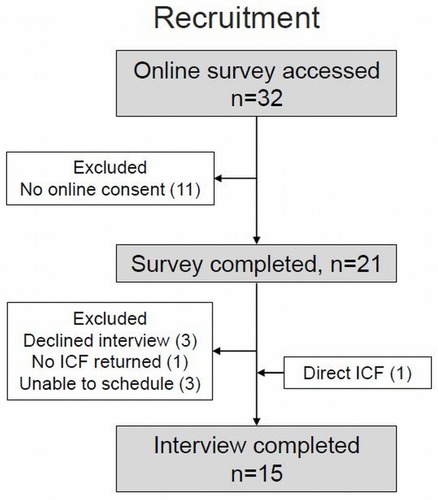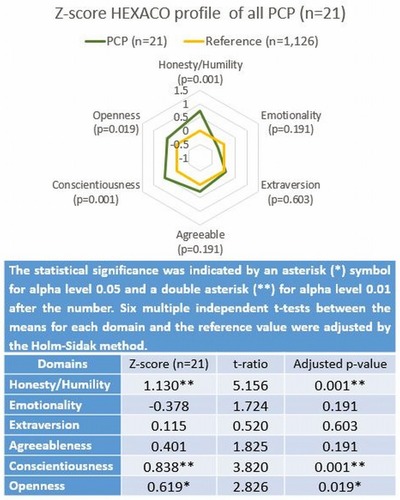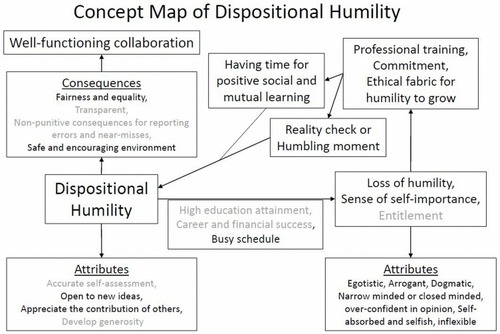Figures & data
Figure 1 Dispositional humility allows clinicians to have an accurate self-assessment, be open to new ideas, appreciate the contribution of others, and develop generosity. Dispositional humility in leaders can facilitate character development of team members and create an environment characterized by fairness and equality, transparency, non-punitive consequences for reporting errors and near-misses, and a safe and encouraging environment for performing work. However, dispositional humility must be nurtured and developed through professional training because high educational attainment, career and financial success, and busy schedules may lead to a sense of self-importance and entitlement that can promote separation of team members into hierarchies based on professional disciplines and specialties. Note: this is not structural equation modeling, and the pathways or factors were not statistically analyzed. Copyright © 2019. Dove Medical Press. Reproduced from Sasagawa M, Amieux P. Concept map of dispositional humility among professionals in an interdisciplinary healthcare environment: Qualitative synthesis. J Multidisciplinary Healthcare. 2019;12:543–554.Citation1

Figure 2 Shows the overall participation in the two phases of data collection. One MD directly contacted the author for interview participation without completing the online survey. Per protocol, this interview data were included.

Figure 3 To illustrate the overall characteristics, each clinician’s HEXACO score was converted to the Z-score based on the reference values. The clinicians showed statistically higher Honesty/Humility, Openness, and Conscientiousness domains compared to the reference group of undergraduate college samples. (n=1,126). *Statistical significance at the alpha level 0.05. **Statistical significance at the alpha level 0.01.

Figure 4 A proposed concept map diagram describing factors associated with dispositional humility and a possible mechanism of how these factors allow clinicians to enhance collaboration among professionals. This figure was made by revising of this article. The three gray scales indicate a new theme/category that appeared in this study (bold), a theme/category that was confirmed by the qualitative analysis (regular), and themes/categories which did not appear in the interview (gray scale).

Table 1 Scientific Rigor Of This Qualitative Analysis (Partly From Lincoln Y, gubaCitation18)
